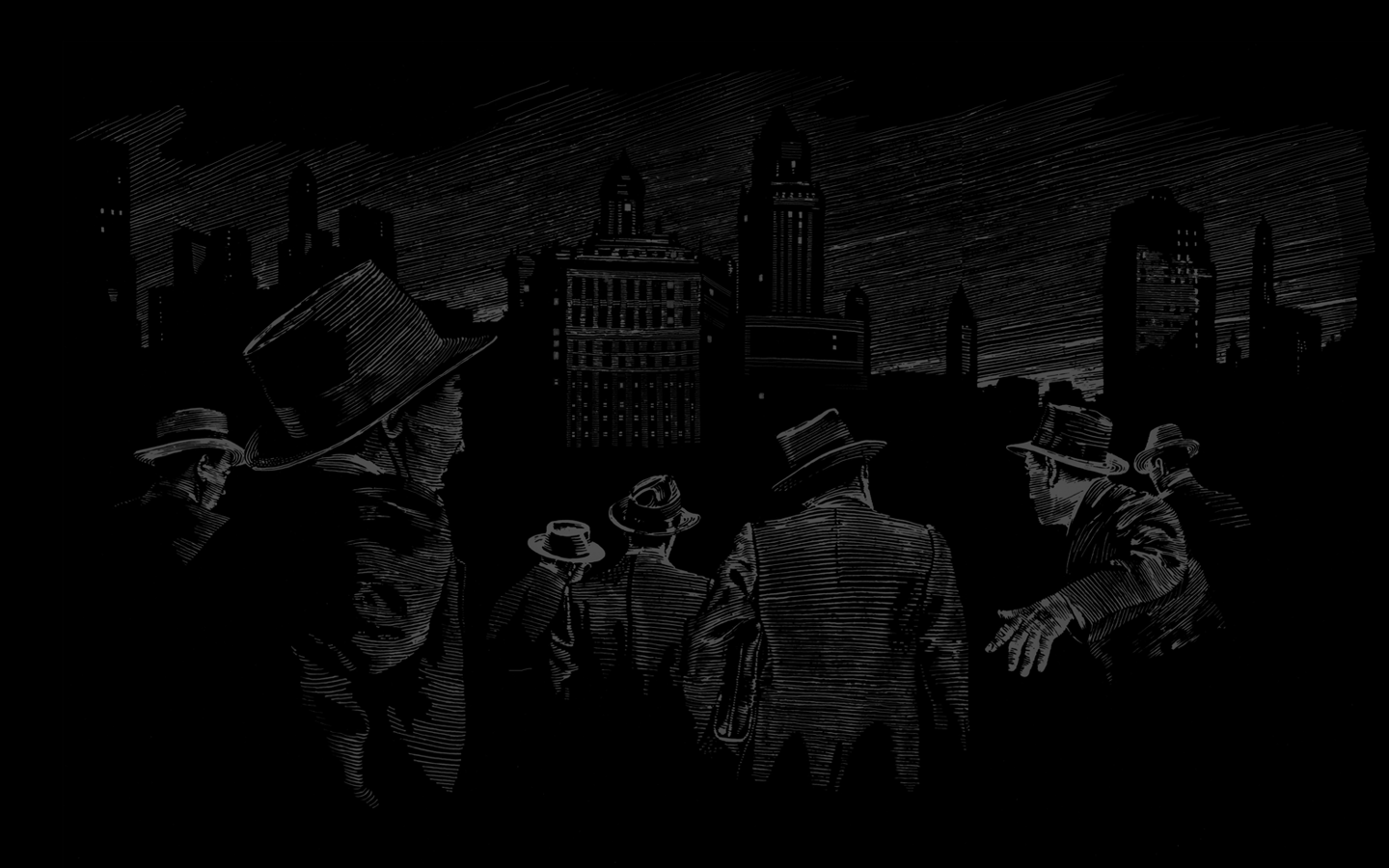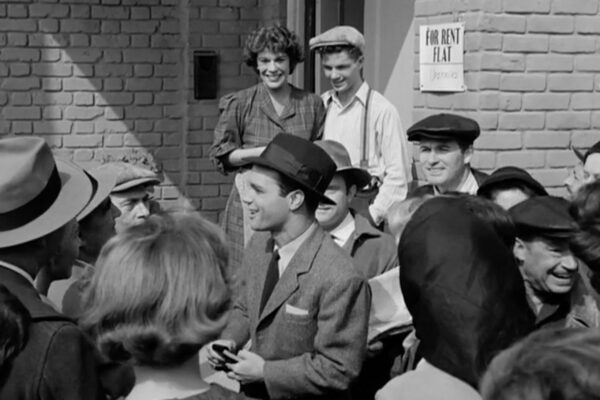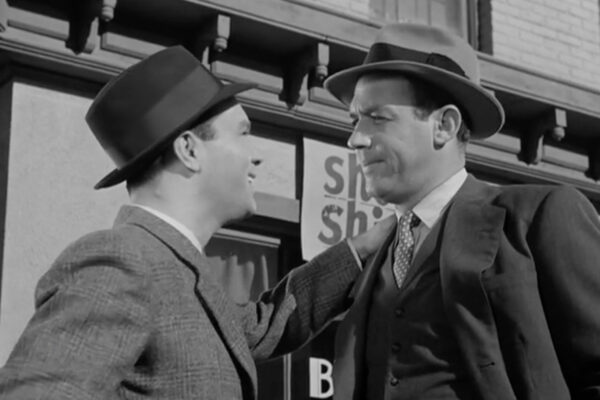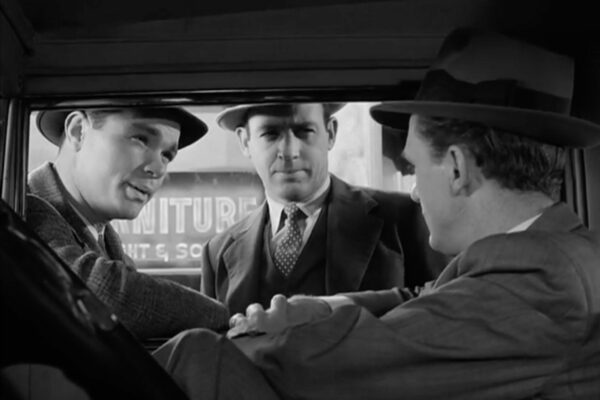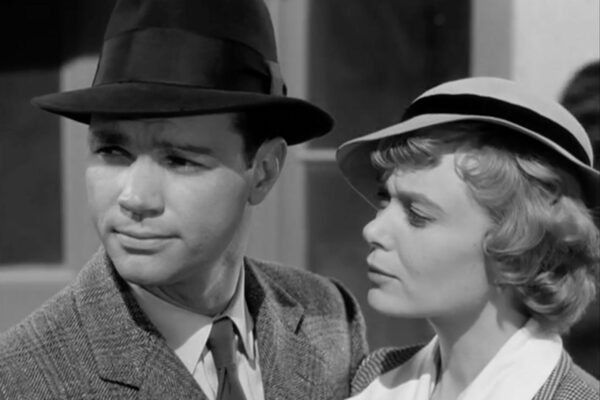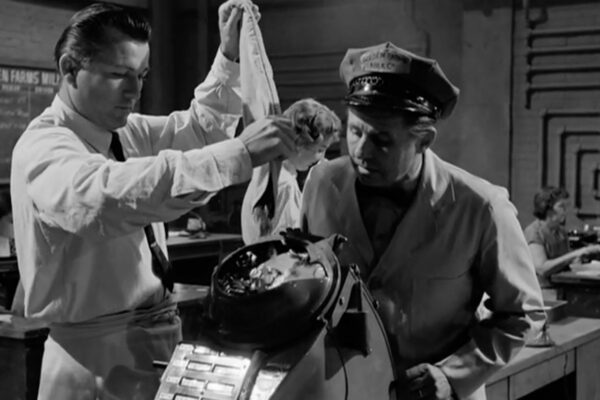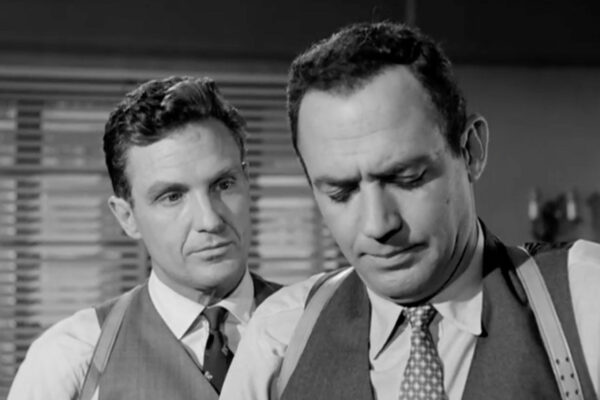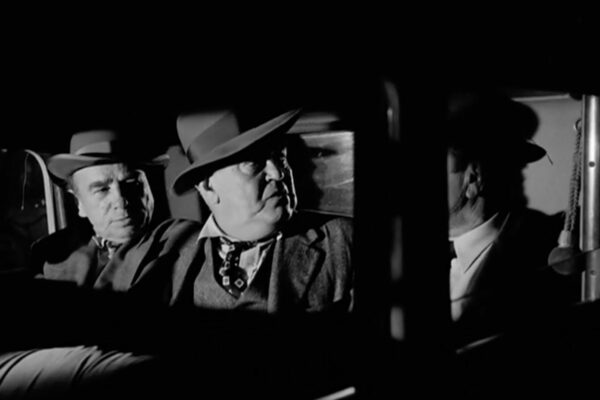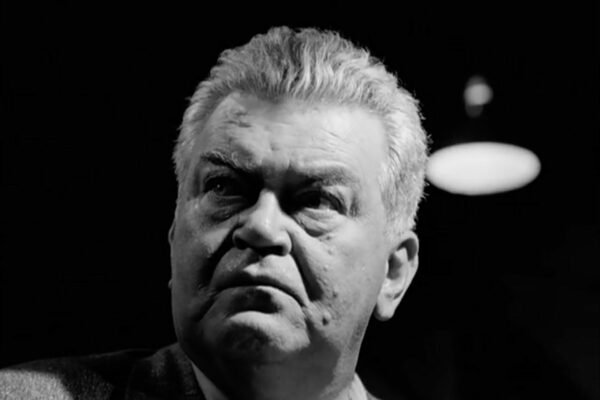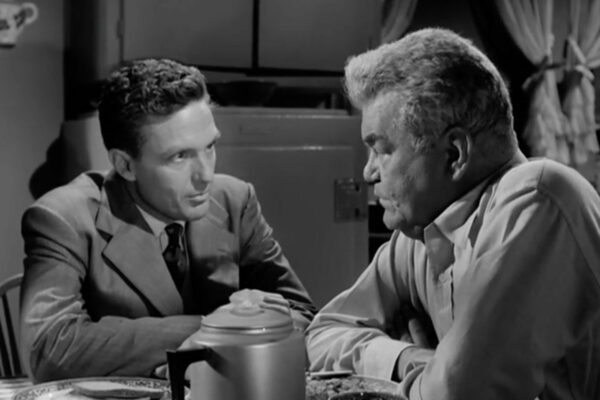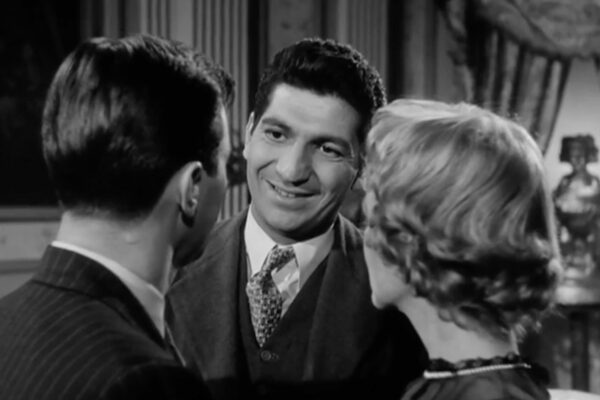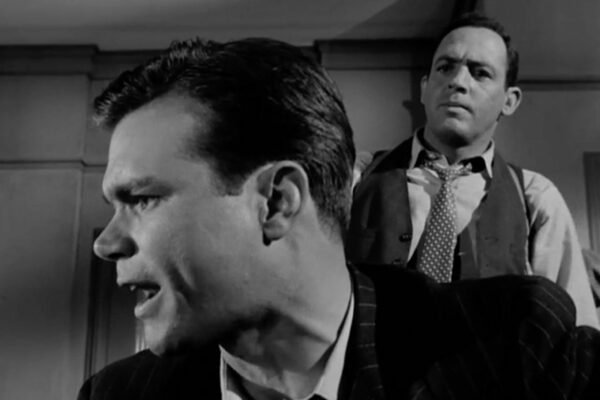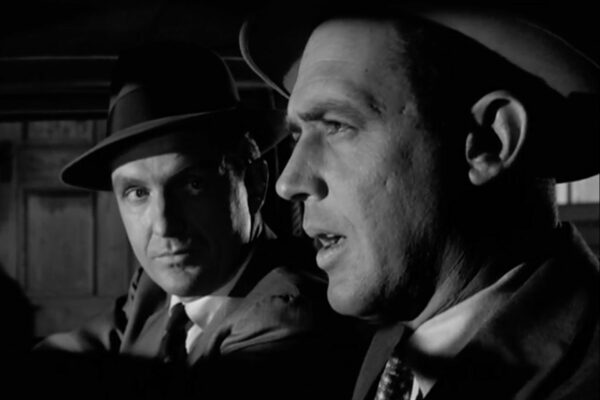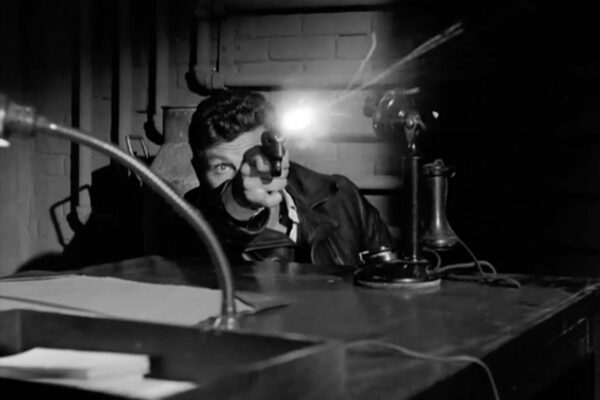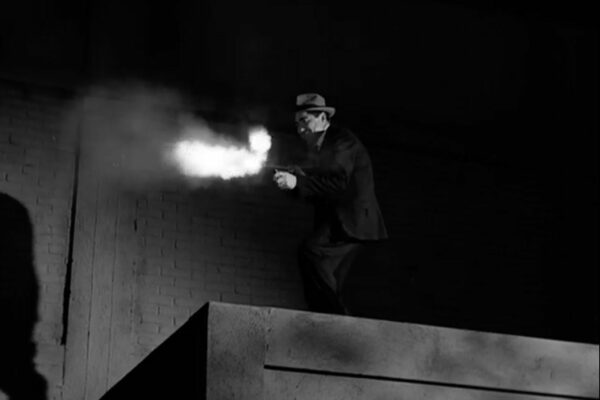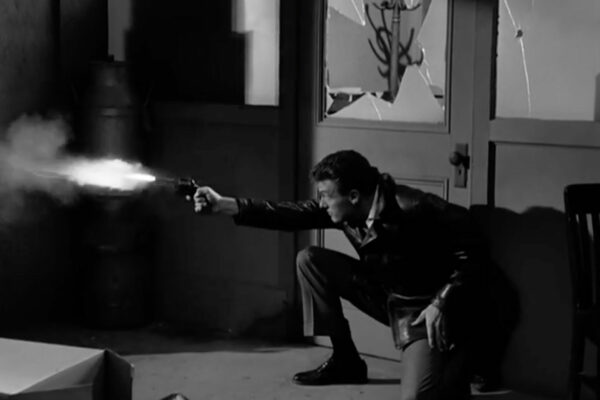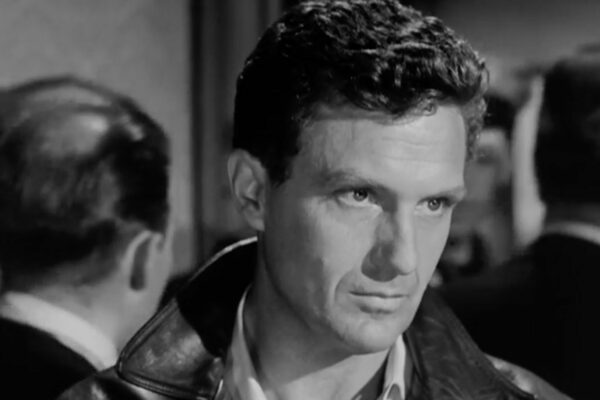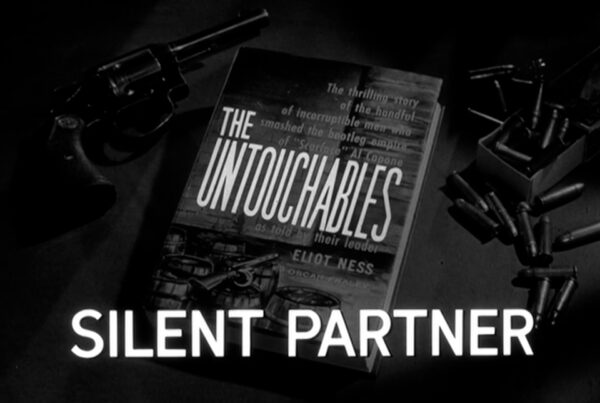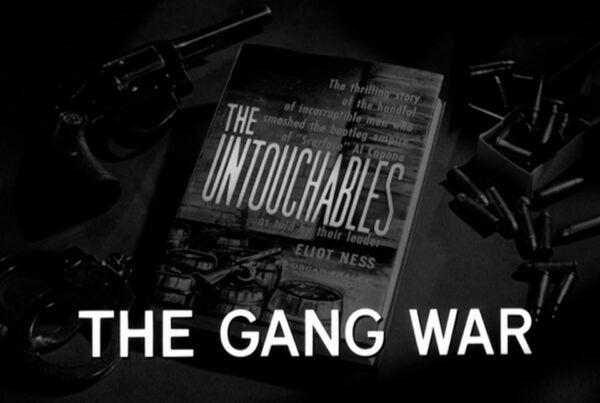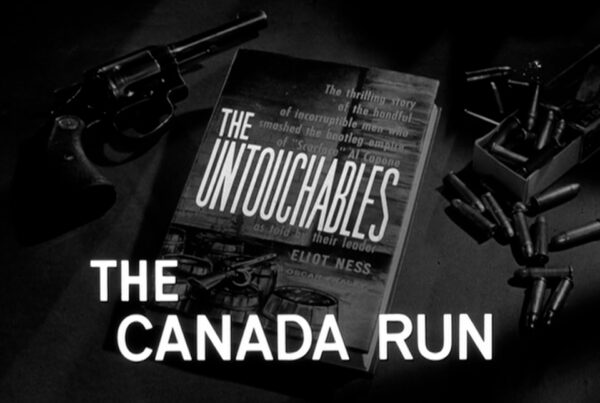YOU CAN’T PICK THE NUMBER
Airdate: December 24th, 1959
Written by Henry F. Greenberg
Directed by Richard B. Whorf
Produced by Charles Russell
Director of Photography Charles Straumer
Co-Starring Jay C. Flippen, Darryl Hickman, Christine White, Doreen Lang, Harry Tyler
“Chicago, South Side. October, 1932. The depth of the Depression. A time of hardship and despair for many, of standing lines and waiting for a meal. For some, not even a place to sleep. A time of closed gates and no work signs. A time of hope, of small, desperate hope. Hope for a better tomorrow and a little break today. Any little break, any heaven-sent little windfall, to happen now, today, right now. The mobsters were equal to the task and came up with the numbers game. On the surface, it worked like a lottery. You chose a number from zero, zero, zero, to nine hundred and ninety-nine. Your chances to win were one in a thousand. If you were lucky, you got back six hundred for one. If you lost, you could play again tomorrow, and nine hundred and ninety nine times out of a thousand – you lost.”
In an attempt to break the back of the numbers racket, Eliot Ness seeks to use the friendship between his man Martin Flaherty and Al Morrisey (Jay C. Flippen), one of the racket’s bankers, as a wedge. He meets stiff resistance until Morrisey is gunned down by the mob for little more than being unable to prevent one of his collectors from cheating his customers. His son, seeking revenge, leads Ness to the racket’s headquarters.
“It was becoming clear to Eliot Ness, that the fight against the organized underworld was not going to be won in a single decisive battle. It could only be won by accepting the fact of a deadly and never-ending war.”
REVIEW
A detailed look at the numbers racket from the period, You Can’t Pick the Number is well done throughout. Although Al Morrisey is killed for rather superfluous reasons, thus placing the entire syndicate in jeopardy, the close scrutiny given the operation is particularly convincing.
The story culminates in a blazing gun battle for which this series is famous, but it lacks the precise choreography of later action scenes. The performances are credible and interesting and side kick Martin Flaherty is given something to do besides play the usual nice guy fed. His friendship with Al Morrisey is based on a life-saving incident when Flaherty was still a Boston cop, but it isn’t explained much beyond Flaherty’s notion that he wouldn’t be alive had it not been for Morrisey.
This Ness isn’t above pressuring his agents to do his bidding. The dynamic between Ness and Flaherty in this episode gives Jerry Paris more character than even Stack afford’s Ness, which is fitting because Flaherty will be written-off the series in a month’s time.
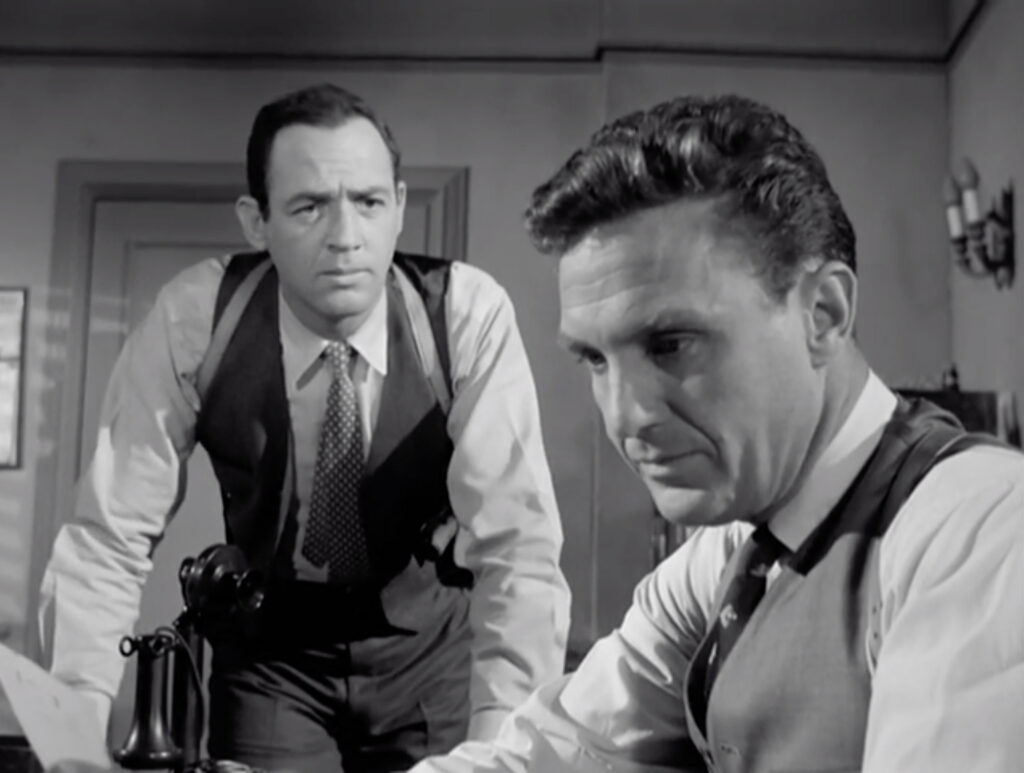
“I just can’t put that kind of pressure on a friend,” says Flaherty. But Eliot Ness can.
When Flaherty later acquiesces to Ness’ command to use his friendship with the Morrisey family as leverage, he pleads with Morrisey’s son Phil. The confrontation is particularly well-acted in an unbroken, two-minute take where the actors verbally wrestle with each other. Rather than admit if whether it was easy to pressure Flaherty, Ness later relents and spares him the trouble of needling the elder Morrisey in a tacit act of grace.
This is the first Untouchables episode to really elevate the Depression directly into the narrative. The opening Winchell narration is incredibly well-written by screenwriter Henry Greenberg, who also wrote the script for 1959’s Al Capone with Rod Steiger. The closing narration treads a similar line to past episodes, highlighting Ness’ desperate fight against not only the criminal underworld, but the hopelessness in which it thrives.
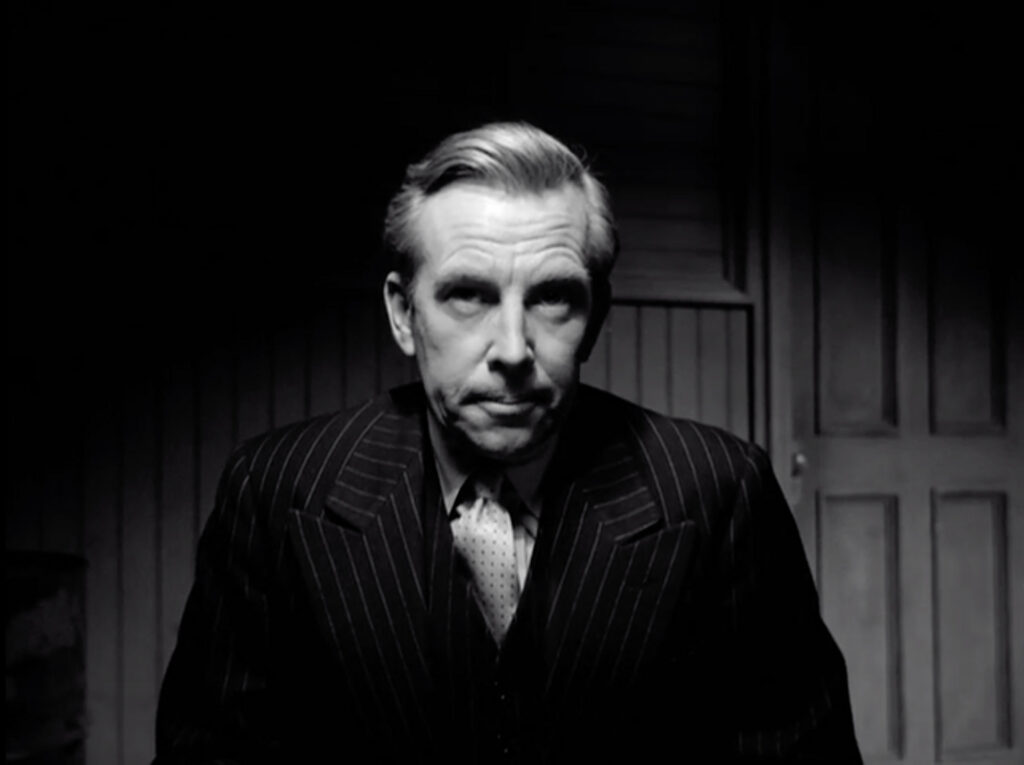
Whit Bissell leaves little impact as the Syndicate’s Pat Danning, but the Syndicate will become an amorphous, unkillable, catch-all consortium of gangsters as the series progresses.
QUOTES
FLAHERTY: Send somebody else. I just can’t put that kind of pressure on a friend.
NESS: I can, Marty. I’m sending you.
POLICE CAPTAIN: Problems, Ness? Federal men having problems?
NESS: What brings you here, Captain?
POLICE CAPTAIN: Balif’s murder. We could help each other, Ness.
NESS: Oh? How?
POLICE CAPTAIN: Exchange ideas. Information.
NESS: Alright, let’s start. Give me the name of every man on your force above the rank of sergeant that’s on the take. Give me the name and the address for the cover of the central bank of the numbers operation.
POLICE CAPTAIN: You’re assuming that I have such information? I’m sorry I came here, Ness.
NESS: If I’ve offended you, Captain, please be assured that I meant to, but somebody in your police force has that information.
ROSSI: Flaherty wants to see you
PHIL: What about?
ROSSI: He’ll tell you.
PHIL: Well, it’ll have to wait.
ROSSI: He wants to see you now, Phil.
PHIL: Look, I can get rough.
ROSSI: Don’t. I’ll get rougher.
OBSERVATIONS
• The episode begins with the bumper of the Untouchables book which features the stylized title words raising up from the cover, which was typically reserved for the teaser credits and for the beginning of the fourth acts of an episode with the voice over (“And now back to the Untouchables…”). This is a rare departure from the use of the standard Secret Seven bumper.
• Danning’s office appears to be Nitti’s boardroom, only slightly redressed.
• LaMarr Kane is briefly back from the dead, after having bought it in the prior week’s episode.
• Darryl Hickman will return in the Third Season’s excellent episode Pressure, again playing a mobster’s son.
• One of the police officers that arrests Morrisey is played by Robert Anderson, who had one of the first lines in the Desilu-Playhouse episode in a brief role as a Prohibition Agent. It was heavily insinuated then, as it is in this episode, that someone in the police force is on the take, so we’ll just pretend it’s the same character. Morrisey would have several other uncredited roles in later episodes and appear twice more as two different police officers.
• The faux-trial held by The Syndicate, is the series’ first flirtation with a shadowy organization altogether different from the Capone mob, a theme that will be explored to great, creative effect in later seasons.
• The second shot fired by a gunman into Morrisey is an optical effect added in post-production instead of an actual live blank.
• The Untouchables dressing up like milk-men to infiltrate and raid the fake milk company is a little silly, especially because their cover is blown within 60 seconds of walking into the building. The ensuing gunfight is staged unconvincingly with Ness and his raiding party about ten feet away from their assailants and stunt men hopping over each other and behind cardboard boxes. Likewise, the ending scene with the card game, corrupt police captain and hoods all sitting merrily together, is a little too tidy.
• Stack, an award-winning marksman in real-life, smartly reloads his .38 revolver halfway through the gunfight and proceeds to unload four rounds into an off-screen gangster moments later. Props to the sound editor for the mostly terrific assemblage of sound effects in what is otherwise a clumsy and claustrophobic climax.
• During the raid, you can see pages of the screenplay on the office desk flapping about amid the shoot out, obviously being recycled as prop paper.
• Bloopers on The Untouchables are fairly rare, but as the raid begins, a wax pellet (used to simulate gunfire) strikes the the adding machine before the gun fight begins. Fired from an air gun, these pellets were effectively used to suggest the impact of a bullet hit on glass and metal. Given the available coverage and editing, this missing sound effect was a deliberate choice, but the visual queue remains.


